What Works For Your Business: The Best Long-Form Content or Short Form Content?

Table of Contents
- What is Long-Form Content?
- What Do You Get From Long-Form Content?
- Tips For Writing The Best Long-Form Content
- What is Short-Form Content?
- Importance of Short-Form Content
- What Do You Get From Short-Form Content?
- Things to Avoid While Creating Short-Form Content
Almost all brands have an online presence that requires them to serve great content to their audience. In the current scenario, content is ruling the internet, and with web 3.0, it is not going down any soon.
It continues to gain popularity over traditional marketing for its greater reach at low economic value and cost-effectiveness.
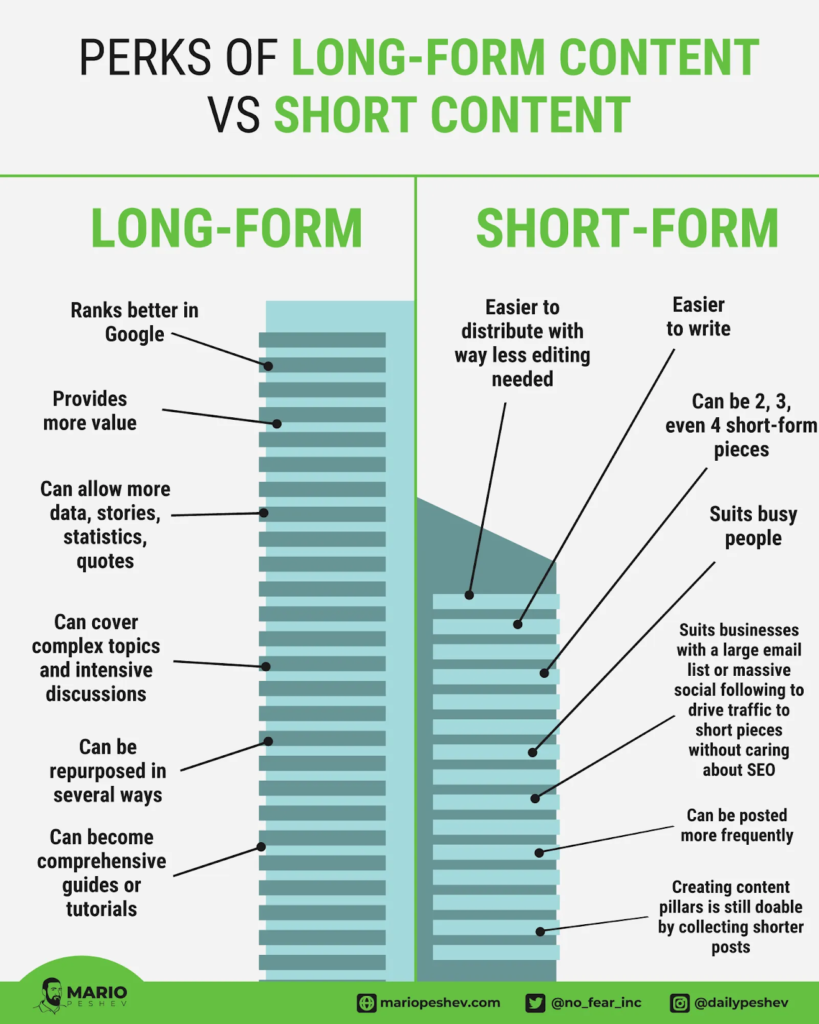
Content writers aim to engage this audience, establish expertise, and build relationships with customers. But what kind of content is best to get your message across? Long-form or short-form?
Can you remember the last time you wrote a white paper article, maybe a long-form guide or an e-book for your business? If you have, you know how much work it is. If you have not, did you realize that not utilizing long-form content can harm your SEO efforts?
Both long-form and short-form content come in many forms, and understanding the differences can help you decide which to use. Each provides different values and caters to a particular objective or customer. Knowing how to use each type of content and write it well can also help you save time, attract new customers, and retain existing ones.
Writing content may be something you enjoy doing, and you have your feelings about whether it is worth the trouble. As a writer, you want to get it done so you can move on to the next item on your to-do list.
We will cover long-form and short-form content types used in digital marketing and explain when you need them. We will also explain how to write your content, with examples of the best ways to use each format for maximum effectiveness.
What Is Long-Form Content?
Setting aside time to develop valuable, motivating, and bookmark-worthy best long-form content can position you as the most trustworthy brand on the internet, as well as provide you with more of what you desire. It will also give your customers more of what they want and require.
Continue reading to see how publishing long-form branded content will increase your online presence, provide proof of authority, and provide more material for engagement.
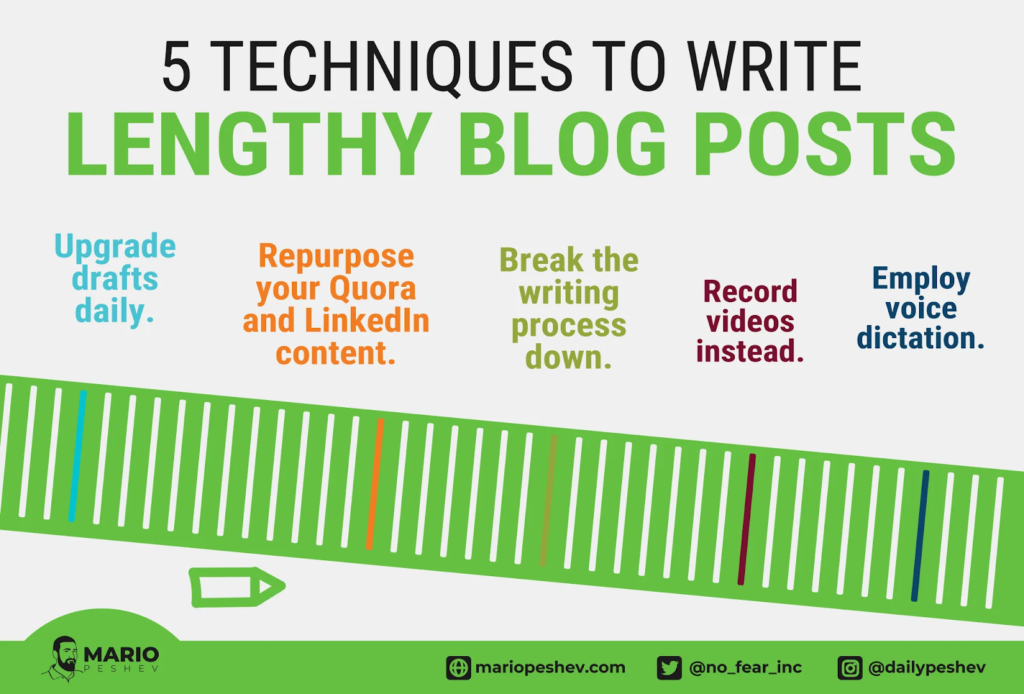
Long-form content is a type of content written for a website, blog post, e-books, case studies, white papers, research reports, survey findings, long descriptive videos, and other types of articles. It is any piece of writing that consists of more than 1,000 words.
The length of the content has almost no boundaries and can be as long as needed to deliver the message you want to convey. It’s important to remember that long-form content does not necessarily need to be extremely lengthy.
For example, if you are writing a blog post on how to take care of your car engine, you do not need to write thousands of words about it because the subject is relatively easy to explain. Likewise, if you have to write a blog post with tips on how to get more visitors to your website via organic search results, e.g., advice on improving your SEO, then sharing this information under 800 words would be hard.
It would be scratching the surface and not doing justice to it. To get all of your valuable information across and provide your readers with enough detail and context they can practically apply it in their lives, you probably need an article longer than 1,500 words. Long-form content can be text-based or even include audio and video.
What Do You Get From Long-Form Content?
Long-form branded content gives you the following:

1. Something to promote
While blog posts are great for fleshing out your platforms, long-form content gives you the chance to create marketing campaigns and an excuse to experiment with ads, building both an audience and a base of loyal followers.
2. More time on your site
Great content leads to more time spent on your site and more opportunities for customer engagement. An increase in page views usually helps your page get more forms filled, email or newsletter signups made, and product purchases. Long-form content enables you to keep people on your site for extended periods.

3. High ranking on search engines
When someone does a Google search for keywords related to your business, they will find your website at the top of the list because Google will notice that you have plenty of valuable information on a subject.
The best long-form content posts provide detail and unique value. It establishes the writer as an expert in their field, fostering trust and empowering readers through learning. The single most effective way to accomplish this is to devote sufficient time to writing comprehensively in a manner that you know you will find truly valuable.
You will also start getting more organic traffic from search engines because other websites will link to yours when looking for information about something related to your niche.
4. High keyword density
Writing long content allows you to add more specific keywords, either on-page or link internal articles related to the current topic with different keyword focuses. The below image shows how to calculate the keyword density.

5. Space for story-telling
Long-form content gives you space to tell a story and develop your writing voice. Last but not least, creating more long-form content demonstrates that you are an authoritative and knowledgeable educator.

Tips For Writing the Best Long-Form Content
- First, make a list of your objectives. Consider why you want to create long-form content. Do you want to save time and connect with your customers? Do you want to grow your email list, and get leads, or do you just enjoy storytelling? Before creating long-form content, consider who the content is for, why you’re writing it, what you’ll consider a success, and how you will measure it.
- Second, choose a topic. Always keep your goals handy when brainstorming ideas for long-form content, and make sure you have a reason for writing that content.
Consider what people are looking for and conduct some keyword research. You should also consider what content you already have that is performing well. What your buyer personas would find interesting, as well as what your competitors are writing about.

- Next, whether you do it yourself or hire a freelancer, the quality of your content will ultimately determine whether it succeeds. When outsourcing your writing, make sure to provide a clear outline of your goals and familiarize your prospective team with your audience and brand.
The more specific you are, the better.
- Fourth on the list, it is designed for both appearance and functionality. The best long-form content has a decent design optimized for better readability, user experience, and lead generation.
Begin by incorporating links to additional content (also audio and video) you may have that your reader will enjoy.
- Last but not least, you don’t want to go through all of this just to publish the content and cross your fingers hoping for the best; you need a comprehensive, creative, and detailed content marketing strategy.
It could include a combination of strategies such as paid ads, email updates, webinars, or even a direct mail campaign. That is all there is to it.
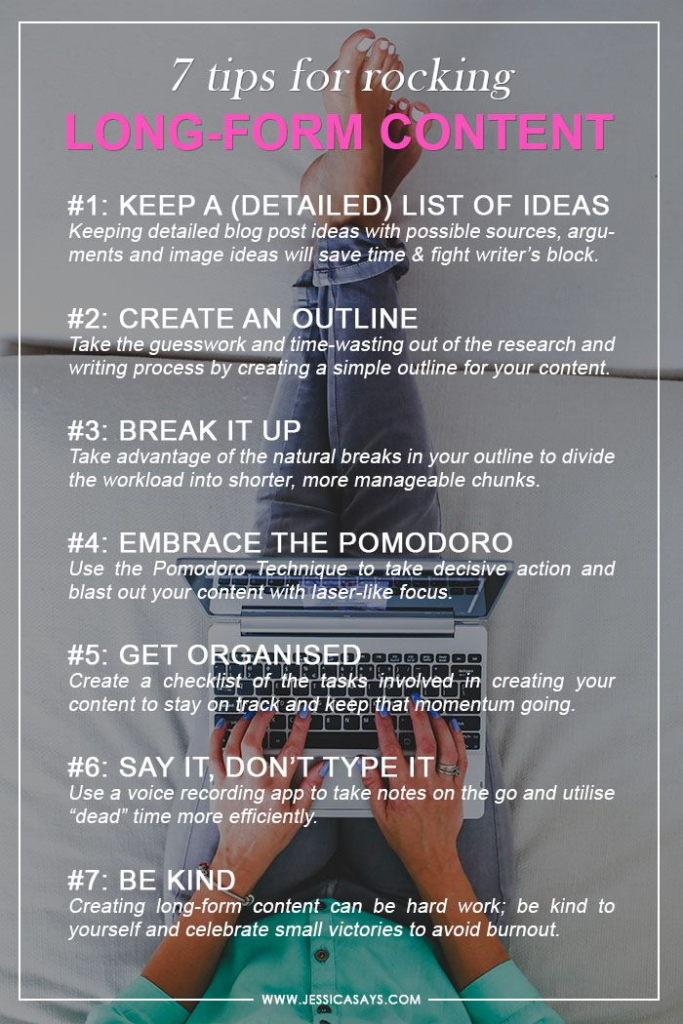
What is Short-Form Content?
Short-form content is any piece of writing that consists of less than 1,000 words. It refers to all those bits and pieces of information shorter than an article but longer than a tweet.
Examples of the best short-form content include social media posts, teasers, short videos, listicles, slideshows, infographics, short pictorial e-books, checklists, catalogs, guides, and many other types of valuable information.
The best short-form content usually consists of only a few paragraphs and includes only the most relevant information in those paragraphs. However, even though it is short, it still needs to be written interestingly to incorporate all essential details required by your readers. Short-form content generally consists of one topic or a few related topics explained in just a few lines.
Importance of Short-Form Content
Short-form content is effective in discussing topics where in-depth writing is not required. For example, how long do you think an infographic needs to be? It needs to be short enough so that users find its topic captivating but long enough to learn something useful.
Studies have shown that content with less than 100 words gets 94% more tweets and 47% more Facebook likes than longer content. That is why writing short-form content marketing is a good idea for marketing your business or clients’ businesses. People are busy and impatient. They want information quickly, and a well-written piece of short-form content can accurately deliver what they need.
Short-form content also takes up less space on search engine results pages (SERPs), meaning there’s a better chance for potential customers to see it without scrolling down through multiple pages of results. Because short articles are often easier to read than full articles, they can help readers discover new websites and products they would otherwise never notice.
Most marketers use short-form content as sales pages or landing pages; it could also just be used as link bait –for instance, if your company launches a new product or service.
What Do You Get From Short-Form Content?
- Short-form content is easier to digest than a long, complicated post or page.
- You can quickly share it via social media and email which gives short-form content added value in the market, both on and off the web.
- It is faster and easier to write, and quicker to read.
- And it takes up less space on your website.
- Short-form content marketing is a great way to test ideas on your audience.
- It encourages non-readers to read something new from your company or brand.
- And short-form content might also persuade them that you have something valuable for them that they should take action on, like signing up for an email list or downloading an e-book from your website.
Best Practices for Writing a Short-Form Content Piece
There are many reasons for writing a short-form content piece; it might be to gather feedback from a client, communicate a message with lots of facts or references to other websites, and more.
Consider four significant elements before composing a story: who, what, where, and why – in addition, do not forget your target reader, focus on actionable tips/recommendations, and add value through telling stories, etc., according to your target readers.
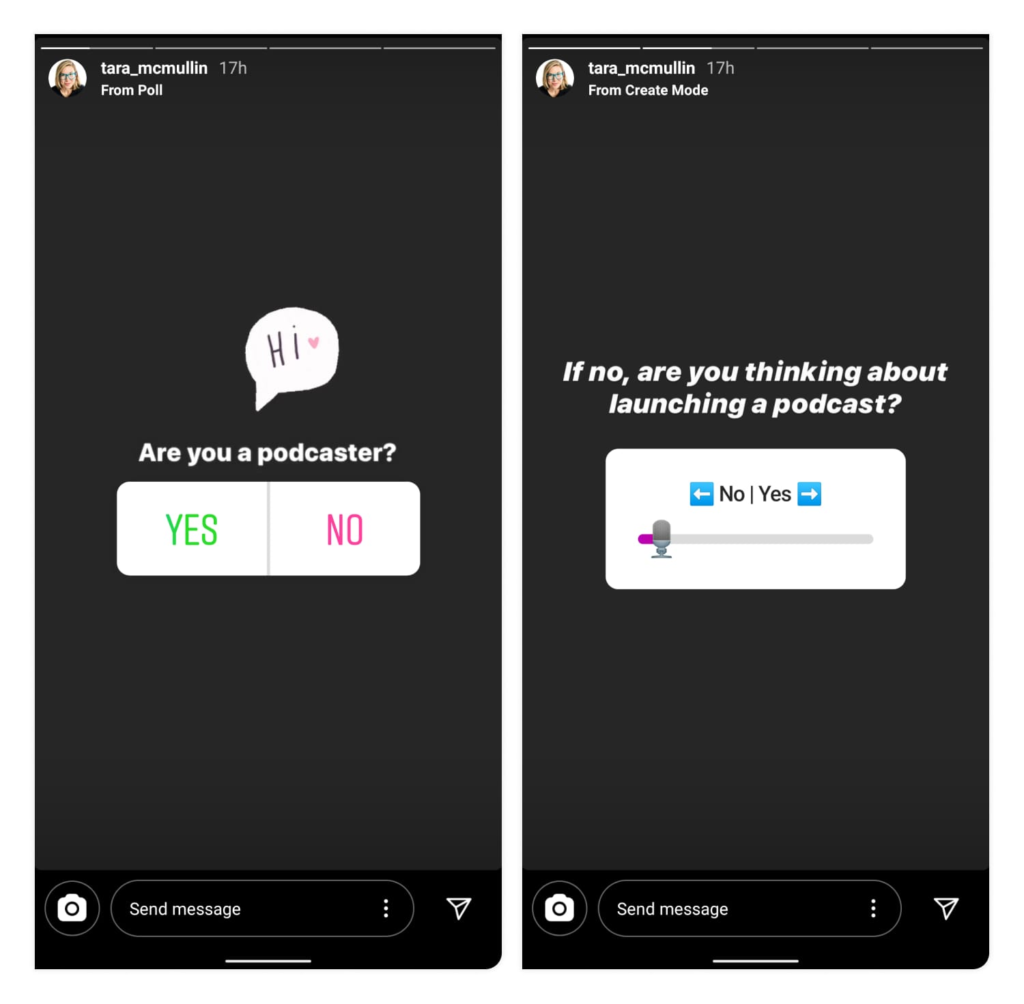
In case you are looking forward to getting more insight into the best short-form content creation, we have come up with five ways for you to generate relevant ideas for short-form content:
- Brainstorm some real-time activities that increase customer engagement like playing games, responding to your Instagram stories, quizzes, polls, etc.
- Take inspiration from real-world situations where business thrives.
- List down customer issues or concerns and work out the solutions in under 1000 words.
- Survey people about their interests.
- Use creative question prompts.
You can use tools such as Infogram and Piktochart (when creating an infographic) that allow you to create charts, data, and images based on previously written content. For example, if you want to show top-selling products on Amazon based on their categories.
You can easily use Infogram to make your short-form content with charts and other related data all in one place. This type of content does not call for a structured format.
The number of characters in your short-form content depends on how detailed and complex you want to write about each topic.
Keep the following points in your mind while writing short-form content:
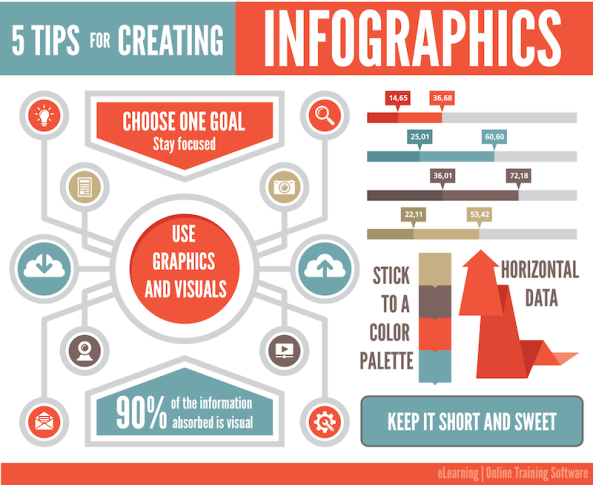
- Try to keep an infographic between 400-and 600 characters with spaces.
- Add images within two different formats, either .jpg or .png.
- Use up to 3 alt texts for each image; make sure alt text is descriptive about what the picture shows.
- Try to go easy with steps so that people don’t get distracted.
- Make your recommendations applicable to a wide range of users.
- Keep your articles simple and easy so that people can read them faster.
Things to Avoid When Creating Short-Form Content
- Short-form content has numerous advantages, but you must first consider the following factors.
- You need to ensure that your micro-content or listicle stands out among others; you can go for a catchy title and keep your main points brief while including clickable links as well.
- Another thing is your writing style and how well you use it to convey the key points of your message. The point here is that keeping your audience engaged via listicles is quite simple.
It does not require any technical knowledge, but sometimes a little creative thinking can kick it up a notch or two. In terms of usability, inform users about different ways they can use a product/service or share interesting information about it, thereby engaging them more deeply with your brand.
- Making people aware of your company or brand has never been so easy! So there is only one thing now left for you to do: start writing.
You now have a thorough understanding of why long-form and short-form content is required and how to create it. Both these forms of content are mandatory for successful content marketing.
Besides posting long-form content on your website as blog posts, you can post it on other websites as guest posts. And you can use short-form content for different social media sites — Facebook, Twitter, Pinterest, Instagram, and others that allow short-form content to be posted directly on their sites.
The best way to write any content piece for the web is to treat it like a conversation between you and your reader.
Key Takeaways
- Publishing and circulating long-form content, such as a blog post, guide, article, or e-book, is integral to content marketing.
- The content on your social media pages, landing pages, product catalogs, videos, listicles, etc., constitute short-form content.
- Writing both short and long-form content requires careful planning and attention to detail if you want it to resonate with your audience and drive results for your company.
- According to a Linkedin survey, approximately 40% of online readers prefer to read blogs, while the remaining 40% prefer to watch videos.
- The consumers of long-form content look for detailed and valuable information.
- Short-form content is quick and easy for the reader to consume.
- It serves the audience with short attention spans.
- The requirement of long-form and short-form content depends on the content marketing strategy and the platform or medium of publication.

FAQs
Blog posts, guides, white papers, e-books, and infographics are forms of long-form content.
Blogs and guides get maximum traffic compared to other long-form content.
Yes. Long-form blogs rank higher in search engines because search engines prioritize sites with more content on a specific topic and keyword density.
Short videos, pictures or GIFs, and short blogs are the most popular short-form content on the internet.
There are several advantages to long-form video content.
1. It establishes you as an expert in your field.
2. It gives you the ability to dive into more detail, which can help increase conversions.
3. Longer videos allow you to tell a story and connect with your audience, and they can also help with SEO.
4. Studies show that longer videos also get more backlinks than shorter videos.
Latest Blogs
Explore how Google’s 2025 AI search updates triggered ranking chaos. Learn actionable strategies to adapt your SEO for AI Overviews, zero-click searches, and SERP volatility. Stay ahead now.
Learn how to rank on AI search engines like ChatGPT, Perplexity, and Gemini by optimizing your content for authority, structure, and relevance. Stay ahead in AI-driven search with this strategic guide.
Explore the best healthcare SEO services for your medical practice. Improve online visibility and effectively reach more patients in need of your services.
Get your hands on the latest news!
Similar Posts

Content Analytics
8 mins read
Google I/O 2025: AI Search Shake-Up & Ranking Volatility

Artificial Intelligence
5 mins read
Top AI Blog Writing Tools for Website Monetization

Blogging
10 mins read